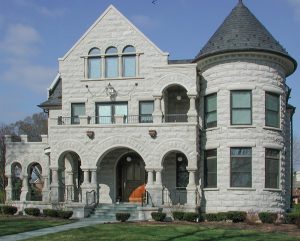How to Safely Clean Brick Surfaces and Remove Stains
Brick walls, fireplaces, and tile surfaces often develop a white haze or cloudy film after installation. This layer usually comes from leftover mortar or grout that dries on the surface. Over time, other stains can also appear, such as powdery white salt deposits or dark smudges from soot, grease, or rust. Both interior and exterior brick are vulnerable to these issues, leaving many homeowners wondering how to clean their brick without damaging its surface or color.
The challenge is that brick is tough yet porous, which means it requires careful cleaning. Harsh scrubbing or the use of strong chemicals can permanently scratch or discolor it, and thin brick in particular is especially sensitive. The good news is that haze, efflorescence, and stains can usually be removed with simple tools, gentle techniques, and the right cleaning products.
When dealing with mortar haze, which appears as a thin, white film hiding the brick’s natural texture, it is best to start with the mildest methods first. A soft dry cloth can often remove light haze indoors without spreading it further. For heavier haze on standard clay brick, a diluted white vinegar solution works well, though it should never be used on limestone, marble, or sealed surfaces. On more delicate or coated brick, a baking soda paste provides a safe alternative. For stubborn residue, commercial haze removers or mortar dissolvers are available, though these must be used carefully and rinsed thoroughly to avoid streaks or damage.
Another common issue with brick is efflorescence, the white powder that develops when water pulls salts to the surface. On exterior walls, chimneys, and basement walls, this can be brushed away when dry with a stiff nylon brush. If needed, the surface can then be rinsed with water or treated with a mild vinegar solution. Specialized efflorescence removers are also available, but muriatic acid should be avoided unless handled by professionals, as it can damage the brick permanently.
Stains beyond haze and salt often call for tailored solutions. Grease that seeps into porous brick can be lifted by applying cornstarch or talcum powder, which absorbs the oil before the surface is scrubbed gently with warm, soapy water. Soot around fireplaces is best removed with a simple dish soap and water mixture, taking care to wet the brick first so that residue does not sink deeper into the surface. Rust stains can often be dissolved with vinegar or, for tougher marks, with oxalic acid-based cleaners designed for masonry.
Throughout all of these cleaning methods, the tools used are just as important as the cleaners. Soft nylon brushes, sponges, and microfiber cloths are effective without scratching the surface. Metal brushes, scouring pads, or random household chemicals should never be used, as they can cause staining, fading, or structural damage to the brick.
Interior and exterior brick require slightly different approaches. Indoor surfaces generally need only mild cleaning, such as dry cloths, baking soda pastes, or gentle soap solutions. Exterior walls, which are more exposed to moisture and salt, may require rinsing, efflorescence treatments, or mortar haze removers. Regardless of location, cleaning should be done in cool conditions, not under direct sunlight, to prevent streaks and dried-on residue.
In some cases, cleaning can strip away protective sealants from the brick, making resealing necessary. After using stronger cleaners or removing heavy buildup, the surface should be allowed to dry completely for at least 48 hours before applying a masonry sealer. The sealer should be applied evenly across bricks and mortar joints, ensuring the wall retains its color and resists moisture in the future.
Ultimately, keeping brick surfaces looking their best requires patience and a light touch. By starting with gentle methods and moving to stronger products only when needed, homeowners can remove haze, salt, grease, soot, and rust without harming the brick itself. A careful rinse, a thorough drying, and occasional resealing will help brick walls, fireplaces, and tiles retain their natural beauty for years to come.

